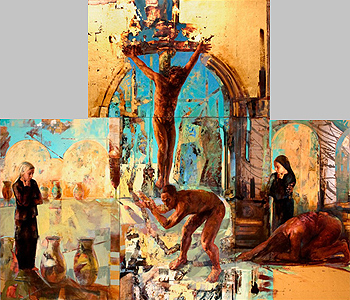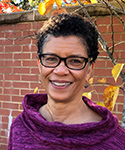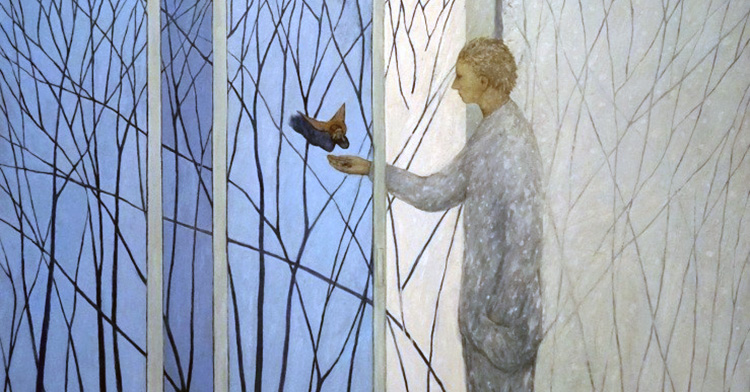Bruce Herman
 Position: Lothlorien Distinguished Chair in Fine Arts at Gordon College, Wenham, Mass.
Position: Lothlorien Distinguished Chair in Fine Arts at Gordon College, Wenham, Mass.
Vocation: Painter, teacher, writer
Education: Boston University School for the Arts
Why is it important for Christians to make art?
Well, if you’ll permit me to comment on your question before I try to answer it, it’s really interesting to me that that question is being asked these days, for a number of reasons.
The fact that that question should be asked as though it’s unusual that Christians should produce art is a question that needs to be examined. This isn’t the way it’s supposed to be.
It’s normal for Christians to produce art. For 1,800 out of the last 2,000 years, Mediterranean, European and Northern European and also North American culture has been dominated by Christians in the arts. That includes architecture, art, music, poetry and other sorts of literature.
There are historians who are not believers, not Christians, who will say, “Without Christianity, visual art would not have flourished in the Western world.”
So in our day and age, to answer the other part of your question, why is it important for Christians to create art? Because one, we always have done so; and two, it has a leavening effect on the arts in general to have people producing art that comes from a deep place of faith, a place of engagement with the Creator of the entire visible universe.
I don’t even accept the category “Christian art.” There’s just art. Art by Christians, art by non-Christians.
I guess I would say, if you’re talking about religious subjects that deal with stories from the Bible or saints or traditional sacred subject matter, I’ve done that. I’ve done that, and I’ve done abstract. I’ve done other sorts of painting as well. [Including QU4RTETS, an artistic response to T.S. Eliot’s “Four Quartets,” with Makoto Fujimura, Christopher Theofanidis and Jeremy Begbie.]
For me, they’re all the same thing. They all deal with color. They all deal with texture. They all deal with composition. All the same things go into making a painting that has an identifiable sacred subject as go into something that maybe is not specifically religious but deals more with the natural world, say, or the human portrait.
In one sense, I’ve thrown my lot with people like William Blake, who once said, “Everything is holy.” There is no sacred and secular divide. Everything is sacred, everything from a wildflower to the cosmic level of looking at the Crab or the Eagle Nebula -- and everything in between.
Artists who have a deep Christian faith actually have an advantage, I think, over people who don’t believe in God. Because -- theoretically anyway -- if they love God, they’ll be paying closer attention to what God has made, and therefore their work will take on greater complexity and beauty, like I think it has in ages past in the work of great artists like Johann Sebastian Bach or Rembrandt or someone like that.
There’s no such thing as Christian art per se. There’s art that has a deep level of integrity, that celebrates the complexity, the intricacy, the beauty, the mystery of the visible universe, which is created by God and therefore is his handiwork and deserves our careful attention.
The traditional way of saying it in Christian lingo is to say, “We do this to glorify God,” but everything that exists glorifies God -- everything. There is nothing that is not part of God’s glory; even the darkness will glorify God.
The preceding is an edited transcript.














